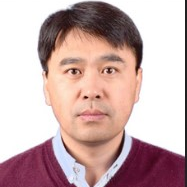Optical Quantum Manipulation of Rydberg Atoms
A special issue of Photonics (ISSN 2304-6732). This special issue belongs to the section "Quantum Photonics and Technologies".
Deadline for manuscript submissions: closed (10 September 2022) | Viewed by 21073
Special Issue Editors
Interests: electromagnetically induced transparency; quantum manipulation of Rydberg atoms; non-Hermitian optics and photonics; topological optics and photonics; cavity optomechanical effects; optical parity–time symmetry; slow-light quantum memory and nonlinear optics
Special Issue Information
Dear Colleagues,
Rydberg atoms with large electric dipole moments, strong dipole–dipole interactions, and long radiative lifetimes have attracted a great deal of attention and become the subject of intense study in the past two decades. Benefiting from these unique properties, significant progress has been made (e.g., from fundamental quantum physics and quantum many-body physics to quantum optics, quantum simulation, and precision metrology) by driving Rydberg atoms with coherent optical fields into specific configurations. The resultant quantum manipulation schemes promise an effective mapping of atom–atom interaction to photon–photon interaction, thus allowing a fine engineering of both atomic and photonic states.
Rydberg atoms in free space or optical lattices have in fact been exploited as an attractive neutral-atom platform to implement various nontrivial tasks of quantum information processing inaccessible for ordinary atoms. Utilizing dipole–dipole interactions in the strong blockade regime, one can realize perfect quantum entanglement, efficient quantum gates, quasi-deterministic single-photon sources, and high-performance single-photon transistors, to name a few. Going beyond the blockade regime, it is also viable to explore novel non-equilibrium physics like antiferromagnet phase and discrete-time-crystal phase.
This Special Issue aims present original cutting-edge research articles predicting, understanding, and exploiting new nonlinear and nonclassical features of highly excited Rydberg atoms in various subfields of physics. Researchers are invited to submit their contributions to this Special Issue. It covers a wide range of topics related to the optical quantum manipulation of Rydberg atoms, including but not limited to:
- Quantum entanglement with Rydberg atoms;
- Quantum logic gates with Rydberg atoms;
- Quantum simulation with Rydberg atoms;
- Quantum optics with Rydberg atoms;
- Quantum many-body physics in Rydberg atoms;
- Quantum hybrid system with Rydberg atoms;
- High-precision metrology with Rydberg atoms;
- Novel nonlinear effects in Rydberg atoms;
- Novel nonlocal effects in Rydberg atoms;
- Novel optical devices with Rydberg atom;
- Non-Hermitian optics with Rydberg atoms.
Prof. Dr. Jin-Hui Wu
Dr. Dong Yan
Guest Editors
Manuscript Submission Information
Manuscripts should be submitted online at www.mdpi.com by registering and logging in to this website. Once you are registered, click here to go to the submission form. Manuscripts can be submitted until the deadline. All submissions that pass pre-check are peer-reviewed. Accepted papers will be published continuously in the journal (as soon as accepted) and will be listed together on the special issue website. Research articles, review articles as well as short communications are invited. For planned papers, a title and short abstract (about 100 words) can be sent to the Editorial Office for announcement on this website.
Submitted manuscripts should not have been published previously, nor be under consideration for publication elsewhere (except conference proceedings papers). All manuscripts are thoroughly refereed through a single-blind peer-review process. A guide for authors and other relevant information for submission of manuscripts is available on the Instructions for Authors page. Photonics is an international peer-reviewed open access monthly journal published by MDPI.
Please visit the Instructions for Authors page before submitting a manuscript. The Article Processing Charge (APC) for publication in this open access journal is 2400 CHF (Swiss Francs). Submitted papers should be well formatted and use good English. Authors may use MDPI's English editing service prior to publication or during author revisions.
Keywords
- Rydberg atom
- dipole blockade
- quantum entanglement
- quantum simulation
- quantum many-body physics
- high-precision metrology
- nonlinear and nonlocal effects
- quantum optical devices
- quantum logic gates






